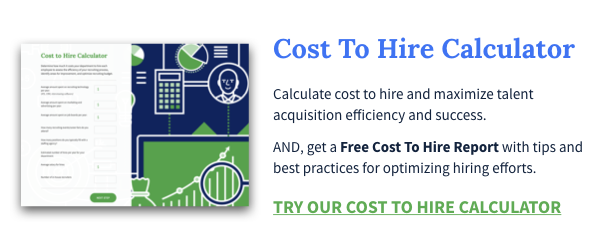
An effective employee retention strategy isn’t just a nice way to keep your staff happy. Maintaining a stable workforce and reducing your staff turnover can also save your company thousands of dollars every year.
Better benefits, flexible workplace policies and competitive compensation packages are some of the most common strategies that businesses employ to ensure that their employees stick around. But in addition to making good business sense to attract and retain top talent, developing a strategy to reduce employee turnover is one of the key ways that you can cut down on your hidden HR costs.
Recent case studies have shown that it costs a company about one-fifth of an employee’s annual salary to hire their replacement. And while this might not seem like a lot if we’re only talking about one or two individuals, the numbers certainly add up if you’re experiencing regular employee turnover.
Where Do Employee Turnover Costs Come From?
Well, to start, there’s the loss of productivity. From the time an employee quits to the time that their replacement is hired, you’re looking at a considerable drop in productivity levels in their area. Plus, until a new employee gets up to speed at a job, there’s naturally going to be an adjustment period.
Learn More: Calculating Cost To Hire To Optimize Your Recruiting Strategy
Then there’s the laundry list of expenses associated with hiring and onboarding new candidates. From advertising positions, to candidate screening, to on-the-job training, the costs just keep adding up when you’re constantly bringing on new staff members.
Moreover, complex jobs that require higher levels of education and specialized training tend to have even higher turnover costs. In these cases, the hiring and interview period is generally longer, as is the amount of time it takes you train and properly prepare the new employee. And, of course, all of this time and effort also delays important projects and sets your company back.
Implementing Retention Strategies to Reduce the Cost of Employee Turnover
Employees generally aren’t looking to change jobs that frequently. If you’re experiencing high turnover rates, it might be time to turn inward and consider where you’re falling short from your staff’s perspective.
Related: How To Build An Employee Retention Plan
Studies show that a growing number of employees are looking to work for companies with flexible family policies—including paid parental leave and workplace flexibly—which would allow them to balance their home and work commitments. Similarly, a leave policy that gives employees the option of taking time away to care for an elderly parent is also highly desirable for many people.
All in all, the cost of implementing these type of polices in your workplace is often minimal by comparison to the cost of losing quality team members over and over again.
To learn more about employee turnover and employee retention strategies, contact Sparks Group today! We’d be happy to discuss your company’s needs.







.png)